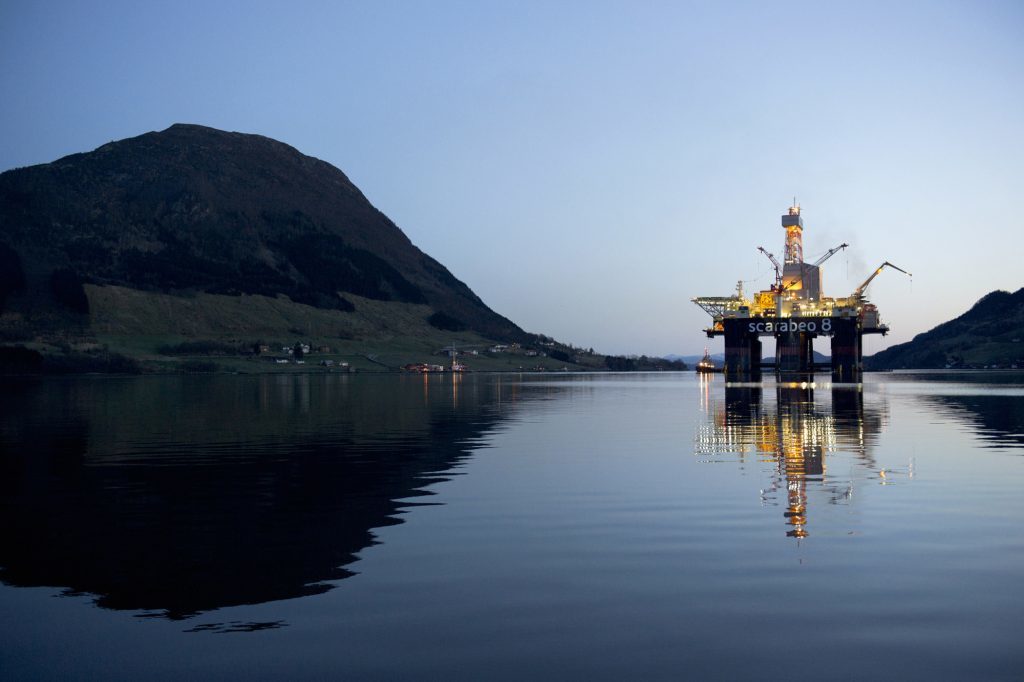
A week after Norway’s $1 trillion sovereign wealth fund said it wanted to get out of oil and gas investments, the latest spending plans from oil companies show how the country’s not about to quit petroleum.
Oil companies operating offshore Norway increased their investment forecast for next year and could add billions of kroner more over the next months as a wave of new projects is expected to be green-lighted, according to a quarterly survey from Statistics Norway. Investments are seen reaching 144 billion kroner ($18 billion) next year, up from an August estimate of 142 billion kroner, it said in a statement on Thursday. Spending this year is seen at 151 billion kroner, down from 156 billion kroner in the previous survey.
While the survey now indicates a decline into 2018, that could change as companies are expected to submit final investment decisions for eight projects before the end of February, the statistics office said. The biggest are Statoil ASA’s Johan Castberg and Snorre Expansion, which alone represent investments of more than 70 billion kroner over several years. The second phase of the giant Johan Sverdrup field is also expected to go forward later in 2018.
“If the schedules for these plans are realized, the accumulated investment costs in 2018 from these projects will increase the investments significantly in field development, compared to the present estimate,” the agency said in the statement.
The revision of the 2018 spending forecast — and the potential for more — is consistent with the government’s view that a three-year slump following the crude-price collapse in 2014 will bottom out this year. It also illustrates how Norway intends to profit from its position as western Europe’s biggest oil and gas producer regardless of whether its sovereign wealth fund is allowed to drop fossil-fuel equities.
The proposal from the central bank, which runs the fund, resonated across the world last week as an acknowledgment from one of the world’s biggest oil producers of the uncertainty that weighs on that industry’s future. The bank said the plan was meant as a measure to reduce risk exposure, and didn’t imply any particular view of future oil prices. The heads of both Norway’s oil-industry lobby and its biggest energy union said last week it was entirely possible for the country to both cut the fund’s exposure to oil and bet on its own offshore industry’s future.
Investments offshore Norway, western Europe’s biggest producer of oil and gas, have dropped continuously from 220 billion kroner in 2014, the peak of a decade-long boom. The backlash has been rougher on oil-dependent Norway than the 2008-2009 financial crisis, with about 50,000 jobs lost in the offshore industry and unemployment reaching 20-year highs. The central bank has cut rates to record lows, while the government made its first ever withdrawals from its huge sovereign wealth fund to compensate for lower oil income and to stimulate the economy.
The central bank has now signaled that it may raise interest rates again at the end of next year as the economy recovers. The government said in October when it presented its budget for next year that it expects oil investments to rise to 157 billion kroner in 2018 from 150 billion kroner in 2017.
The revision of the 2018 spending forecast “implies some upside” to Norges Bank’s projections, Svenska Handelsbanken AB said in a note to clients on Thursday. Still, as the oil industry’s share of the economy has shrunk over the past years, that’s unlikely to change the central bank’s outlook for gross domestic product growth enough to have a “material impact” on the interest-rate path, it said.
Recommended for you

